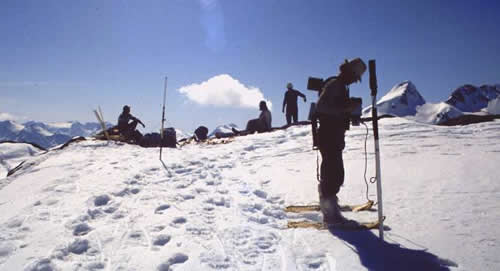Introduction
Importance of Earth’s subsurface
The surface of the earth has provided the setting for most human endeavors throughout the history of civilization, and these activities have been profoundly affected by the largely invisible characteristics of the immediate subsurface. Human development has depended heavily on resources obtained from both near surface (as in construction materials) and from hundreds to thousands of meters deep (as in metalliferous ores and petroleum based products). We also use water from subsurface aquifers, deposit much of our waste within the near subsurface, and build structures that must interface safely with these shallow regions.
Physical properties vs rock type and structure
In relation to these activities, subsurface characteristics of particular interest to earth scientists include the location, distribution and structure of rock types, grain size distribution, material strength, porosity and permeability and others. The earth’s inherent complexity can make it difficult or impossible to infer these characteristics from direct observation. Therefore, they often must be inferred from the distribution of more fundamental physical properties such as density, electrical conductivity, acoustic impedance and others. These basic properties can be measured via geophysical surveys that record the earth’s response to various types of natural or humanmade signals. The following table lists physical properties that are most commonly related to geological materials and/or structures, and geophysical survey types that can map variations of these physical properties.
Common physical properties |
Associated geophysical survey techniques |
|---|---|
Electrical resistivity (or conductivity) |
DC resistivity, all electromagnetic methods |
Magnetic susceptibility |
All magnetic survey methods |
Density |
Gravity, and seismic reflection or refraction |
Acoustic wave velocity |
Seismic reflection or refraction |
Other physical properties that can be usefully mapped include chargeability, natural radioactivity, dielectric permitivity, and porosity.
Demand for improved modeling




Subsurface structures are usually interpreted either in terms of objects, layers, linear features, or complex distributions. This type of information, obtained remotely and non-invasively using geophysical surveys, is routinely used in geotechnical, exploration and environmental activities to characterize geological structures, estimate ore reserves, map contaminant plumes, etc. What is involved in obtaining such information? First, fieldwork is done (Figure 1), which involves making many careful measurements along survey lines on the ground or from aircraft. Traditionally, interpretations of these measurements are often made from graphs or maps of raw or processed data, resulting in qualitative or crudely quantitative information about the locations, depths, and types of materials underground.

Fig. 1 A field crew initializes geophysical acquisition equipment used to conduct a mineral exploration survey at a site near the Iskut River, in west-central British Columbia.
In the face of ongoing demand for increasingly quantitative information, however, sophisticated techniques are now being used to numerically estimate the distribution of the earth’s physical properties. These modelling procedures give geoscientists a more cost-effective, reliable and accurate means of extracting as much information as possible from conventional survey data. They also make it possible to present the rather technical information in more visual and meaningful ways to managers, shareholders, regulatory agencies and other interest groups.
After reading this section, it should become evident that the application of geophysics to problems involving earth’s subsurface is a non-trivial process. A seven-step framework should be used to help understand each aspect of this process. This framework can be viewed in A seven-step framework for applied geophysics.